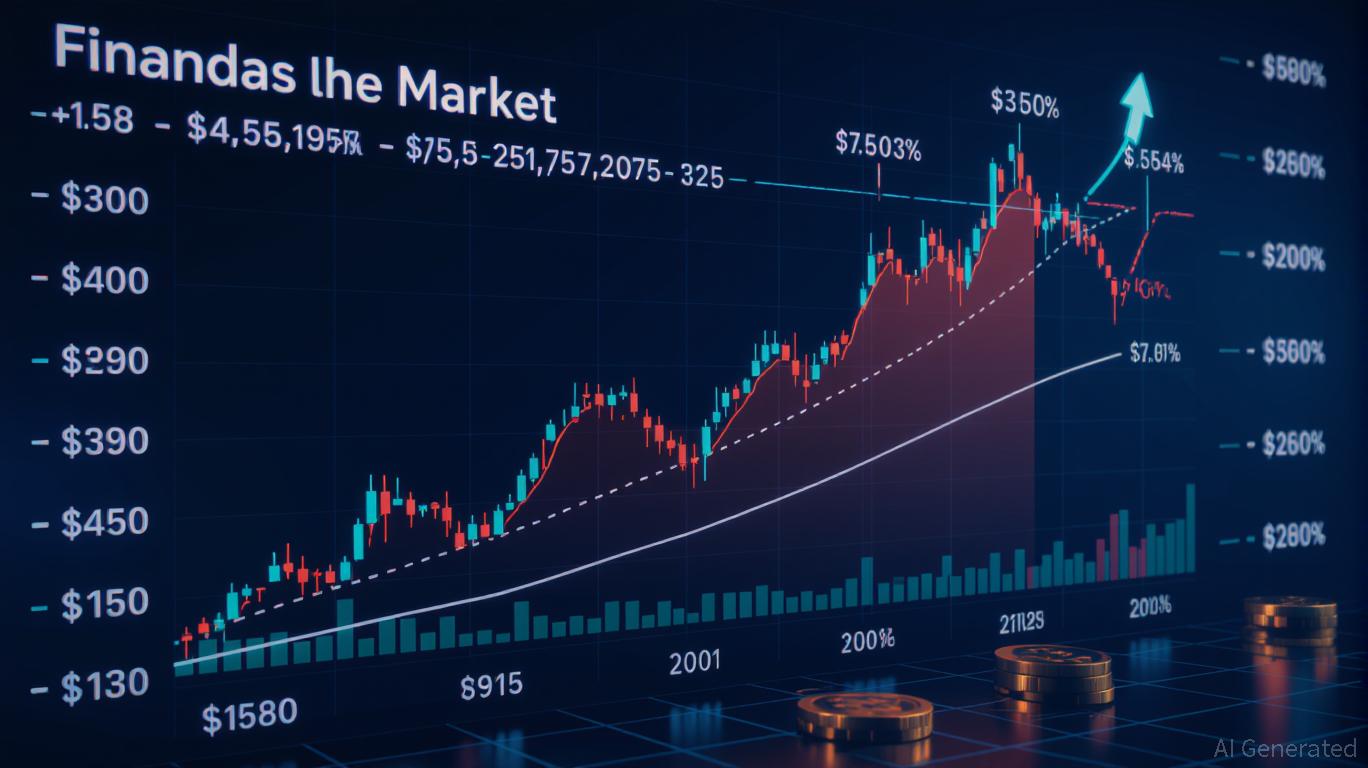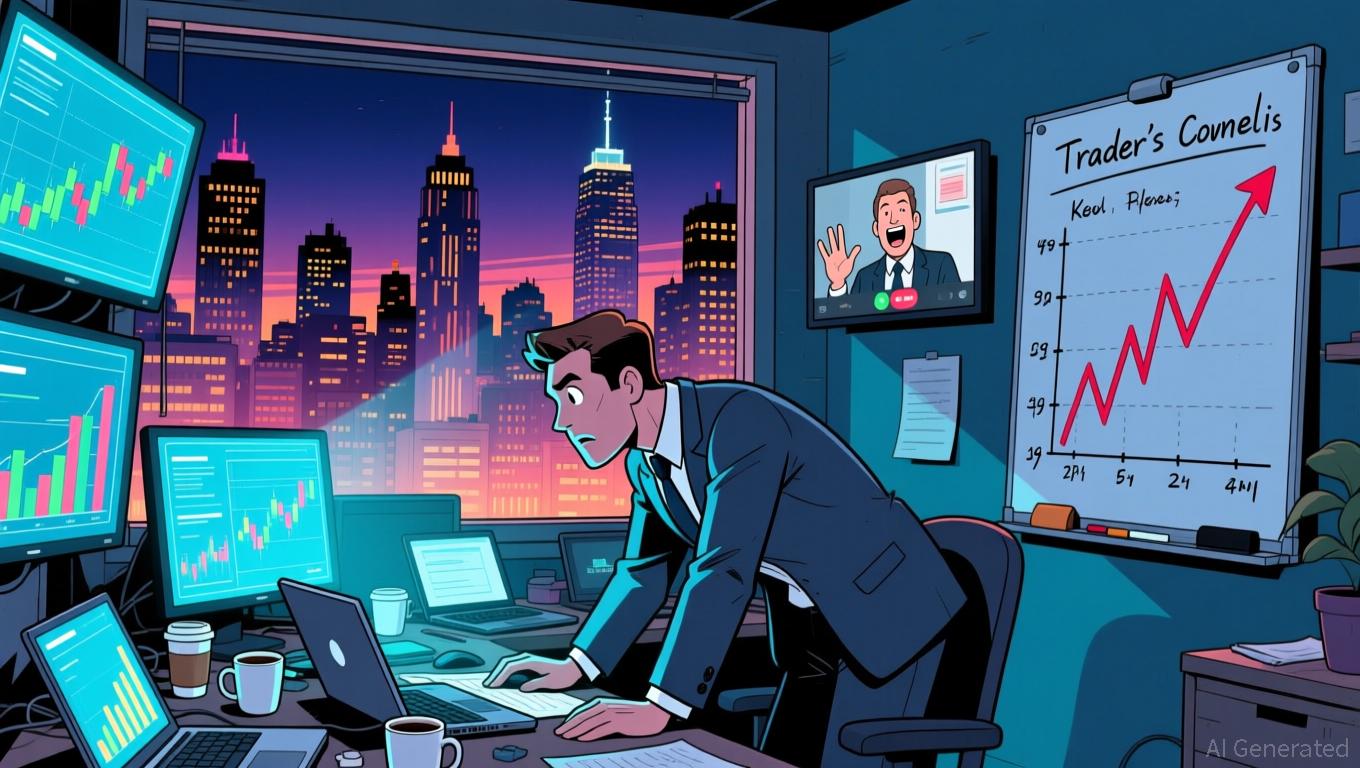Zcash Halving and Its Effects on the Crypto Market
- Zcash's potential 2025 halving, though unconfirmed, drives speculative optimism and price surges amid privacy-focused crypto trends. - Network upgrades like ephemeral addresses and zenZEC cross-chain tokens enhance Zcash's utility, boosting DeFi integration and trading volume. - Institutional adoption grows as Arthur Hayes' Maelstrom allocates ZEC as second-largest holding, reflecting privacy-utility balance in portfolios. - Market dynamics highlight tension between halving hype and tangible upgrades, wi
Market Psychology: The Influence of the Halving Story
Even without a formal statement, traders are actively speculating about a potential Zcash halving at the end of 2025. Past trends show that halvings often spark optimism, as market participants expect a reduction in new supply and possible price increases. This effect is even more pronounced for privacy-oriented coins like Zcash, where the scarcity narrative dovetails with rising worries about financial monitoring, as highlighted in a
According to CoinMarketCap, Zcash’s value jumped by more than 150% in 2025, fueled by renewed enthusiasm for privacy technologies, as reported in a

Network Progress: Boosting Privacy and User Experience
Despite the halving remaining unverified, Zcash’s ecosystem has achieved notable progress in 2025. The Electric Coin Company’s Q4 2025 roadmap, released on November 2, focuses on enhancing privacy and usability, including the rollout of ephemeral address functionality. This feature streamlines private transactions and cross-chain transfers, solving a major challenge for both users and developers, as detailed in a
Zenrock’s wrapped
Institutional Sentiment: Entering a New Phase of Adoption
November 2025 saw a notable increase in institutional attention toward Zcash. Arthur Hayes, BitMEX’s co-founder, revealed that ZEC is now the second-largest liquid asset in his family office, Maelstrom, just behind
The recent price rally has also drawn speculative investment, with Zcash’s trading volume climbing 139% to reach $4.63 billion in November, based on the same
Long-Term Strategy: Weighing Hype Against Real Progress
The tension between speculative excitement and actual network improvements raises important questions about Zcash’s future. On one side, the lack of a confirmed halving suggests that current price action is fueled more by sentiment than by fundamental changes. On the other, the ECC’s development plans and cross-chain features provide a solid base for ongoing growth.
Institutional investors seem to be taking a balanced approach. Some see Zcash as a short-term bet on privacy trends, while others consider it a long-term asset for a diversified crypto portfolio. This split is clear in the differing strategies of retail traders, who chase quick gains, and institutional investors, who focus on lasting utility and regulatory adaptability, as described in the
Conclusion: Is a Privacy-Driven Future Ahead?
Zcash’s experience in 2025 highlights the intricate forces at play in the crypto sector. The much-anticipated halving, though still unofficial, has become a central theme for both retail and institutional investors, raising the coin’s profile. At the same time, technical upgrades and cross-chain integrations are solving real-world problems, broadening Zcash’s appeal beyond its privacy foundation.
For those investing with a long-term perspective, the challenge is to separate temporary hype from lasting value. While the halving story may cause short-term swings, Zcash’s true worth will be determined by its capacity to meet changing market needs and regulatory standards. As Charles Hoskinson has suggested, privacy coins could represent the next major evolution in blockchain, as mentioned in the
Disclaimer: The content of this article solely reflects the author's opinion and does not represent the platform in any capacity. This article is not intended to serve as a reference for making investment decisions.
You may also like
Bitcoin Updates: Positive Technical Indicators for Bitcoin Face Off Against Declining Interest from Institutional Investors
- Bitcoin forms bullish double-bottom pattern, targeting $110K as technical indicators and macroeconomic relief align for a rally. - Institutional demand cools, with BlackRock's ETF inflows plummeting and negative on-chain demand threatening $100K support. - Cathie Wood cuts 2030 BTC forecast to $1.5M amid stablecoin competition, while Fed rate cuts and liquidity improvements bolster short-term optimism.

Bitcoin’s Abrupt Decline: Reasons Behind the Fall and What It Means for Cryptocurrency Investors
- Bitcoin's 2025 November drop below $104,000 revealed market fragility amid regulatory gaps, macroeconomic shifts, and institutional caution. - U.S. government shutdowns disrupted SEC/CFTC oversight, triggering $1.296B in liquidations and exposing crypto derivatives' liquidity risks. - Fed rate cuts initially boosted Bitcoin demand, but geopolitical tensions and $1.22B ETF outflows signaled institutional risk aversion. - Corporate Bitcoin purchases like Strategy Inc.'s $49.9M investment highlighted strate

Bitcoin’s Abrupt Price Swings and Broader Economic Catalysts: Managing Systemic Threats as Fed Messaging Changes and the Dollar Gains Momentum
- Fed's 2025 policy shift to liquidity injections and rate cuts (3.75-4.00%) drove Bitcoin to $105,000 amid falling borrowing costs. - Institutional adoption ($134.6B in Bitcoin ETFs) and Harvard's $116M allocation offset dollar strength's crypto headwinds. - 1,001x leverage on platforms like Hyperliquid triggered $19B in 24-hour liquidations, exposing crypto markets to systemic collapse risks. - Deepening correlations with traditional markets (e.g., Trump tariffs dragging down crypto) erode Bitcoin's uniq

ALGO Falls 5.03% Over 24 Hours Despite Mixed Medium-Term Performance and Ongoing Yearly Downtrend
- ALGO dropped 5.03% in 24 hours to $0.1792 on Nov 11, contrasting with 14.05% weekly gains and a 46.37% annual decline. - Technical analysis highlights short-term volatility vs. long-term bearish trends, with critical support near $0.17 and resistance at $0.20–$0.22. - A 5% price drop would reduce a $10,000 investment to $9,500, with annualized losses and tax implications amplifying negative impacts. - Backtesting suggests modest portfolio damage from 5% declines, though diversified holdings and market co